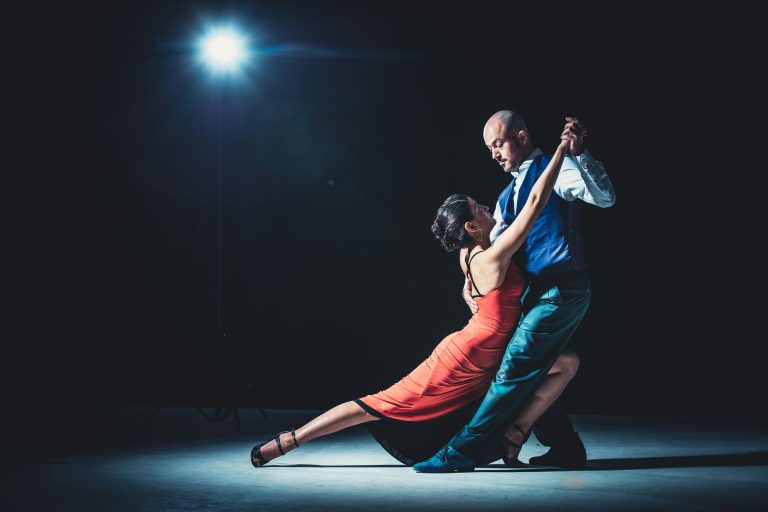
From Pampas to Pavement: Tracing the Evolution of Argentine Tango in Underground Buenos Aires Nightclubs
24 February, 2024In Buenos Aires, the Argentine tango has a long history connected to the city’s working-class areas. It started on the grasslands and has changed over time to be a lively part of the city’s underground nightlife. But before we dive into its fascinating journey, take a moment to explore BetLabel for the latest odds on live sports betting.
The Origins of Argentine Tango
At its core, tango is special because it brings together different cultures, showing off Argentina’s mix of backgrounds. Tango blends African, European, and Indigenous styles, making it lively and full of flavor. It’s more than just a dance—it represents Argentina’s diversity, celebrating the different people who live here and their unique traditions.
Tango grew from small places in Argentina to enchant people worldwide. Its power came from its ability to express deep feelings that everyone could understand. With its graceful moves and intense emotion, tango became a language of passion and desire, connecting people from everywhere.
Golden Age and Decline
Back in the 1930s, Argentine tango was all the rage. It hit its highest point, getting super popular everywhere around the world. This time is often called the golden age of tango because that’s when it really made a name for itself globally. One of the big reasons for this was Astor Piazzolla. He mixed classical music with tango in such a cool way that people couldn’t get enough of it. His music was full of feelings and had these really intricate tunes that just grabbed you. Then there’s Carlos Gardel. His singing was so heartfelt, it touched people’s souls, not just in Buenos Aires but everywhere he performed.
Tango became super popular, captivating folks everywhere with its passionate music and elegant moves. But even amid its success, tango encountered tough times. Political changes and cultural shifts in the mid-20th century dimmed its shine. Economic struggles and social unrest in Argentina slowed down the spread of tango around the world. Plus, as people’s interests evolved, traditional art forms like tango lost some of their appeal, putting its future in doubt.
Innovation and Fusion
In the secret world of Buenos Aires’ underground tango, something special happens. Old tangos mix with modern beats, making a captivating blend. It’s a place where tradition meets innovation, exciting both traditionalists and those looking for something new.
In the hidden world of Buenos Aires’ underground tango clubs, something special is happening. Classic tango melodies blend seamlessly with fresh rhythms, creating a distinctive sound loved by both long-time enthusiasts and newcomers. It’s a perfect mix of tradition and innovation that’s hard to resist.
Leading this evolution are today’s tango musicians. They’re bold innovators, breaking rules to redefine what tango can be. They’re exploring new sounds, using electronic beats and different instruments to give tango a fresh, modern feel. The traditional bandoneón now has a company with synthesizers and electric guitars, mixing old and new sounds in music.
They combine traditional tango steps with elements of hip-hop and contemporary dance, bringing an exciting new flavor to their shows. In the dimly lit dance halls, they give old tango moves a fresh spin, making the tradition feel vibrant and alive.
The Subculture of Tango
In the secret spots of Buenos Aires’ underground tango scene, there’s something special happening beyond just dancing. It’s a place where everything feels slower, and the music tells tales of yearning and passion. In these dimly lit milongas, a close group of people flourishes. They’re all connected by their deep love for tango.
In this welcoming community, newcomers find themselves embraced by experienced members who have devoted years to mastering the art. Amidst the music and chatter, laughter fills the air as glasses are raised, brimming with the smooth richness of Malbec wine. Here, differences in age and background fade away, replaced by a mutual appreciation for the captivating world of tango.
Challenges and Triumphs
Preserving Argentine tango is tough. Money problems make it hard for artists and fans to keep things going. Fancy developments are replacing old neighborhoods, maybe pushing out the folks who’ve loved tango for ages. And as people’s interests change, tango might not be as popular as before.
Despite challenges, the tango community gets creative to preserve the dance’s soul. They use social media to reach more people, work to save old venues, and team up with other cultures to bring new ideas to tango. They stay positive and keep the tango spirit strong, no matter what.
Follow Sounds and Colours: Facebook / Twitter / Instagram / Mixcloud / Soundcloud / Bandcamp
Subscribe to the Sounds and Colours Newsletter for regular updates, news and competitions bringing the best of Latin American culture direct to your Inbox.

